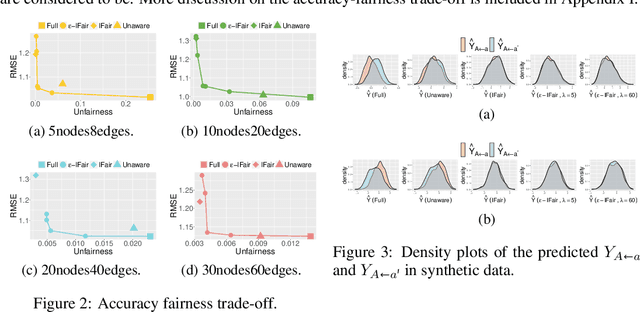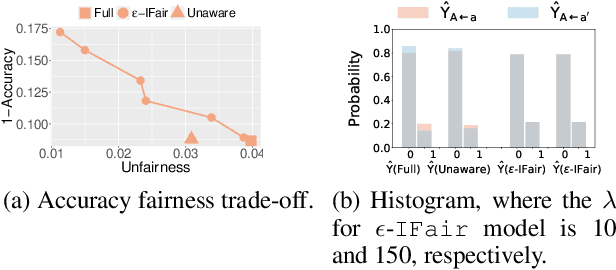Aoqi Zuo
Interventional Fairness on Partially Known Causal Graphs: A Constrained Optimization Approach
Jan 19, 2024



Abstract:Fair machine learning aims to prevent discrimination against individuals or sub-populations based on sensitive attributes such as gender and race. In recent years, causal inference methods have been increasingly used in fair machine learning to measure unfairness by causal effects. However, current methods assume that the true causal graph is given, which is often not true in real-world applications. To address this limitation, this paper proposes a framework for achieving causal fairness based on the notion of interventions when the true causal graph is partially known. The proposed approach involves modeling fair prediction using a Partially Directed Acyclic Graph (PDAG), specifically, a class of causal DAGs that can be learned from observational data combined with domain knowledge. The PDAG is used to measure causal fairness, and a constrained optimization problem is formulated to balance between fairness and accuracy. Results on both simulated and real-world datasets demonstrate the effectiveness of this method.
Counterfactual Fairness with Partially Known Causal Graph
May 27, 2022



Abstract:Fair machine learning aims to avoid treating individuals or sub-populations unfavourably based on \textit{sensitive attributes}, such as gender and race. Those methods in fair machine learning that are built on causal inference ascertain discrimination and bias through causal effects. Though causality-based fair learning is attracting increasing attention, current methods assume the true causal graph is fully known. This paper proposes a general method to achieve the notion of counterfactual fairness when the true causal graph is unknown. To be able to select features that lead to counterfactual fairness, we derive the conditions and algorithms to identify ancestral relations between variables on a \textit{Partially Directed Acyclic Graph (PDAG)}, specifically, a class of causal DAGs that can be learned from observational data combined with domain knowledge. Interestingly, we find that counterfactual fairness can be achieved as if the true causal graph were fully known, when specific background knowledge is provided: the sensitive attributes do not have ancestors in the causal graph. Results on both simulated and real-world datasets demonstrate the effectiveness of our method.
 Add to Chrome
Add to Chrome Add to Firefox
Add to Firefox Add to Edge
Add to Edge